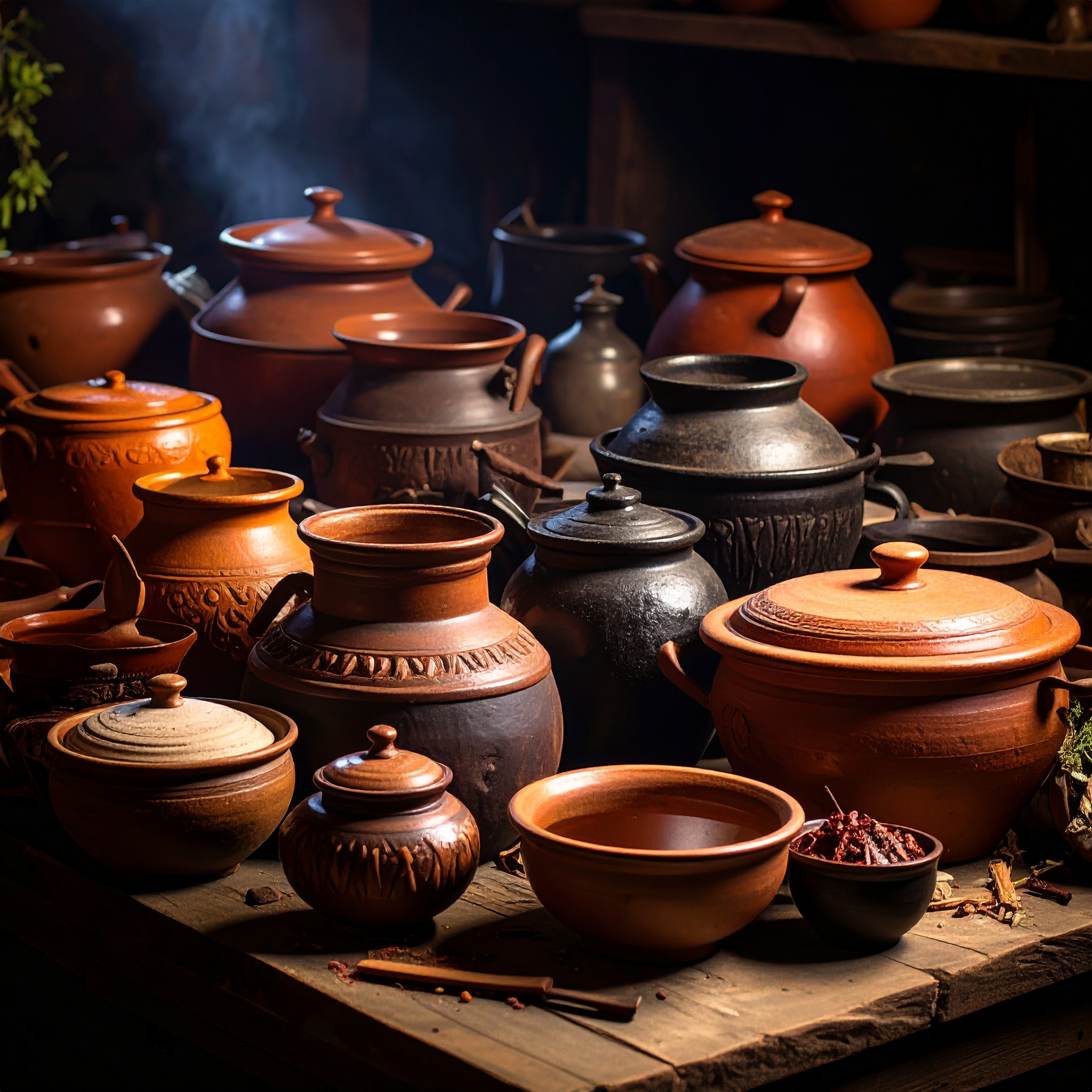In most culinary traditions, a dish is born by cooking ingredients and placing them on a chosen plate. In Japanese cuisine, however, the process is inverted: the meal begins with the vessel. Chefs and home cooks alike select the ceramic first, then envision a dish that complements its form, texture, and color. This concept reflects a deeply rooted Japanese aesthetic, illustrating the inseparable bond between pottery and food.
This approach goes far beyond styling—it embodies a uniquely Japanese philosophy that harmonizes cuisine with ceramic, space, time, and emotion. The vessel is not merely a functional container; it profoundly shapes the perception and flavor of the dish it holds. It is this understanding that has given rise to a cultural practice where every meal begins by considering the cup or bowl that will complete it.
Japan’s ceramic heritage stretches from Jōmon-period pottery to the refined aristocratic wares of the Heian era, culminating in the tea ceremony’s exalted ceramic traditions. Across centuries, utility and artistry have merged, fostering an appreciation for beauty in everyday life. In this context, serving vessels are selected not only for their practicality, but for their ability to resonate with the season, enhance the atmosphere, and elevate the dining experience.
For instance, a hearty simmered dish served in a deep bowl feels calm and traditional, while the same ingredients plated flat evoke a modern, light impression. A dish on pristine white porcelain communicates clarity and purity, whereas presented on a dark-glazed vessel, the ingredients’ colors pop vividly. The vessel’s color, texture, rim thickness, heft, and tactile warmth—each nuance dramatically transforms the dish’s visual impact and emotional tone.

Some chefs regard the plate not merely as a vessel, but as the very stage upon which cuisine performs. Just as the breadth of a stage, the lighting, and the backdrop serve to elevate the presence of an actor, so too does the chosen vessel enhance the significance and presence of the dish it carries. A square dish introduces compositional tension, a round bowl offers soft embrace, a thick ceramic vessel evokes warmth and stability, while glass brings instant clarity. These impressions subtly shape not only perception, but taste itself.
In summer, a chilled appetizer served on glass feels cooler than its actual temperature. In autumn, hearty root vegetables in earthenware prefigure warmth even before the first bite. In this way, the vessel speaks to the senses before the food does—engaging sight, touch, and emotion prior to flavor.
Furthermore, the venerable structure of ichiju‑sansai (one soup, three dishes) is grounded in the relationship between food and form. Rice belongs in a chawan, soup in a wan, and dishes in bowls or plates suited to each role. This is not mere utility—it’s a philosophy of containment. Each item exists in harmonious dialogue with its vessel, collectively contributing to a refined and balanced whole.
Choosing the right vessel is inseparable from the season itself. In spring, plates adorned with cherry-blossom motifs or glazed in pale green are favored. Summer brings celadon, white porcelain, or translucent glassware. Autumn sees rich earthen hues like persimmon-red glazes, while winter calls for the restrained elegance of black or gray ceramics. This mindful rotation of vessels shapes not only the dish but the atmosphere of the space.
Conversely, chefs often design their plating to complement the vessel. A bowl with a raised center naturally inspires a sculptural, layered presentation. High-rimmed, inwardly curved vessels suit saucy or brothy preparations, while flat plates demand minimalist drizzles of oil or sauce. In this way, the vessel becomes not only a supporting player, but a guiding influence in a dish’s visual narrative and composition.

Many chefs cultivate direct relationships with potters, commissioning bespoke vessels that align perfectly with a dish’s concept—the dimensions, color, glaze response, weight—all fashioned to harmonize with the culinary vision. Through this dialogue, both dish and vessel emerge together. This unique synergy is a cornerstone of Japanese cuisine’s evolution from mere sustenance to total artistic experience.
At home, the right dishware is equally transformative. A simple change of bowl can shift mood and mindset—even a modest morning meal served in your favorite chawan can inspire a moment of gentleness and intention. Such small gestures enrich everyday dining and gently organize the rhythm of life.
In recent years, this ethos has spread beyond chefs: young people are showing heightened interest in ceramics. Local pottery fairs and craft markets are flourishing, with pieces valued for their tactile quality and the visible presence of their creators. This movement mirrors a broader rediscovery of “plating first, cooking next”—an appreciation of the vessel as part of the dining narrative.
A vessel does more than hold food; it calibrates the diner’s senses, conveys the chef’s intent, and harmonizes the ambiance—adding an invisible, yet perceptible, layer of flavor. In allowing dishes and vessels to meet, we elevate the act of eating into a memorable moment—one that resonates far beyond taste alone.




